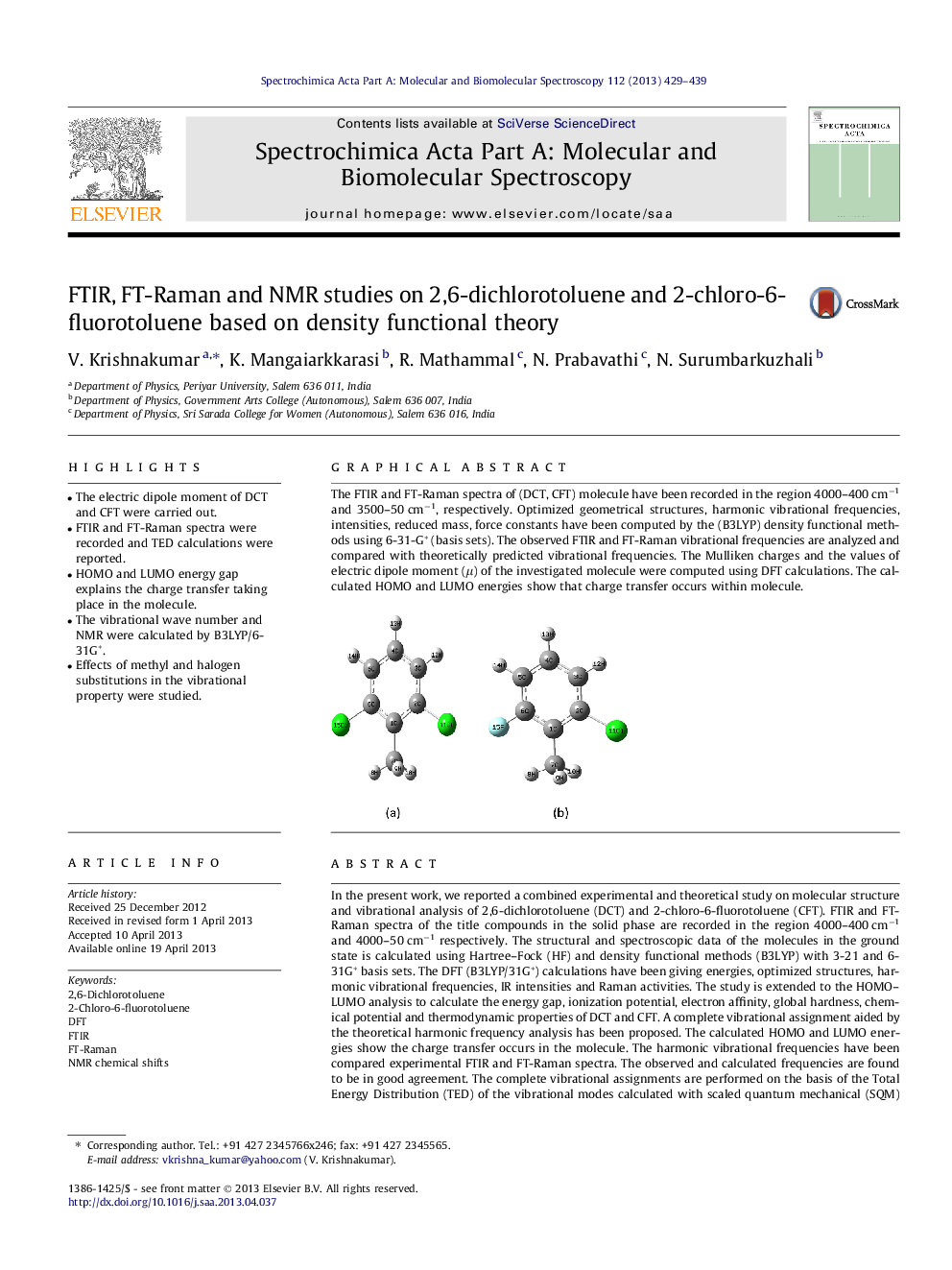| Article ID | Journal | Published Year | Pages | File Type |
|---|---|---|---|---|
| 1230765 | Spectrochimica Acta Part A: Molecular and Biomolecular Spectroscopy | 2013 | 11 Pages |
•The electric dipole moment of DCT and CFT were carried out.•FTIR and FT-Raman spectra were recorded and TED calculations were reported.•HOMO and LUMO energy gap explains the charge transfer taking place in the molecule.•The vibrational wave number and NMR were calculated by B3LYP/6-31G*.•Effects of methyl and halogen substitutions in the vibrational property were studied.
In the present work, we reported a combined experimental and theoretical study on molecular structure and vibrational analysis of 2,6-dichlorotoluene (DCT) and 2-chloro-6-fluorotoluene (CFT). FTIR and FT-Raman spectra of the title compounds in the solid phase are recorded in the region 4000–400 cm−1 and 4000–50 cm−1 respectively. The structural and spectroscopic data of the molecules in the ground state is calculated using Hartree–Fock (HF) and density functional methods (B3LYP) with 3-21 and 6-31G* basis sets. The DFT (B3LYP/31G*) calculations have been giving energies, optimized structures, harmonic vibrational frequencies, IR intensities and Raman activities. The study is extended to the HOMO–LUMO analysis to calculate the energy gap, ionization potential, electron affinity, global hardness, chemical potential and thermodynamic properties of DCT and CFT. A complete vibrational assignment aided by the theoretical harmonic frequency analysis has been proposed. The calculated HOMO and LUMO energies show the charge transfer occurs in the molecule. The harmonic vibrational frequencies have been compared experimental FTIR and FT-Raman spectra. The observed and calculated frequencies are found to be in good agreement. The complete vibrational assignments are performed on the basis of the Total Energy Distribution (TED) of the vibrational modes calculated with scaled quantum mechanical (SQM) method. 13C NMR chemical shifts results are compared with the experimental values. The experimental spectra also coincide satisfactorily with those of theoretically constructed spectrograms.
Graphical abstractThe FTIR and FT-Raman spectra of (DCT, CFT) molecule have been recorded in the region 4000–400 cm−1 and 3500–50 cm−1, respectively. Optimized geometrical structures, harmonic vibrational frequencies, intensities, reduced mass, force constants have been computed by the (B3LYP) density functional methods using 6-31-G* (basis sets). The observed FTIR and FT-Raman vibrational frequencies are analyzed and compared with theoretically predicted vibrational frequencies. The Mulliken charges and the values of electric dipole moment (μ) of the investigated molecule were computed using DFT calculations. The calculated HOMO and LUMO energies show that charge transfer occurs within molecule.Figure optionsDownload full-size imageDownload as PowerPoint slide
